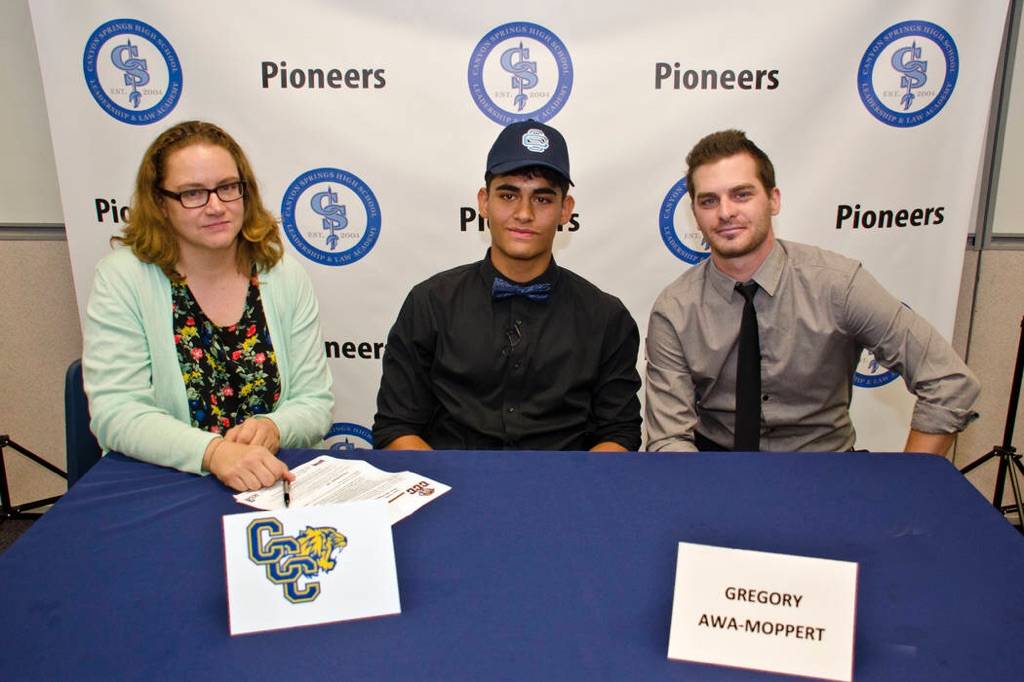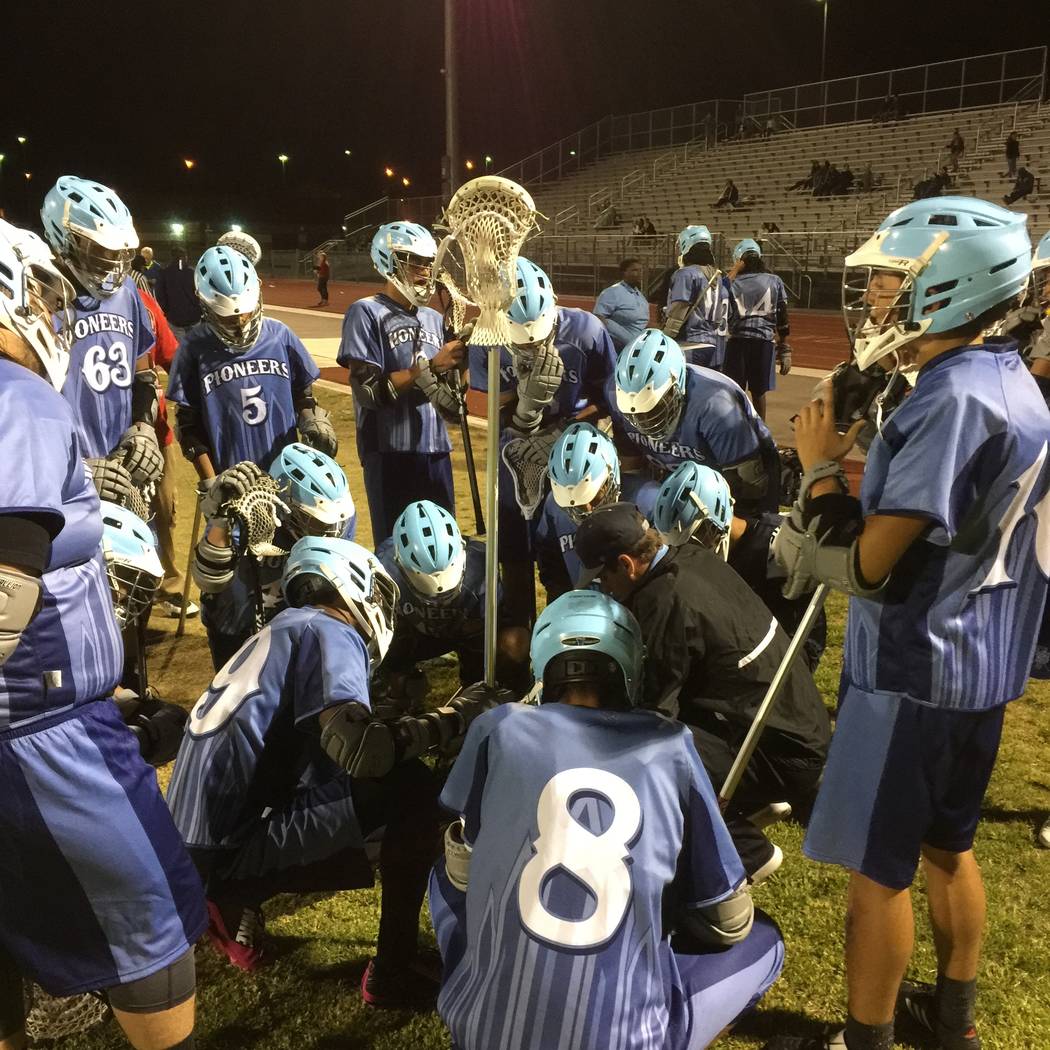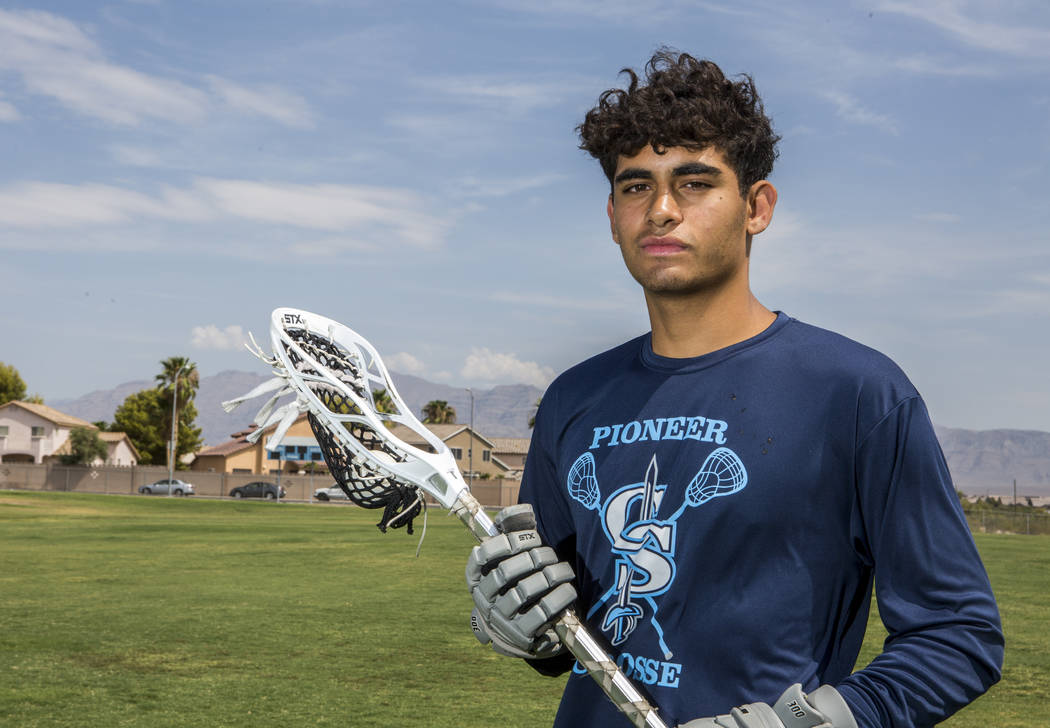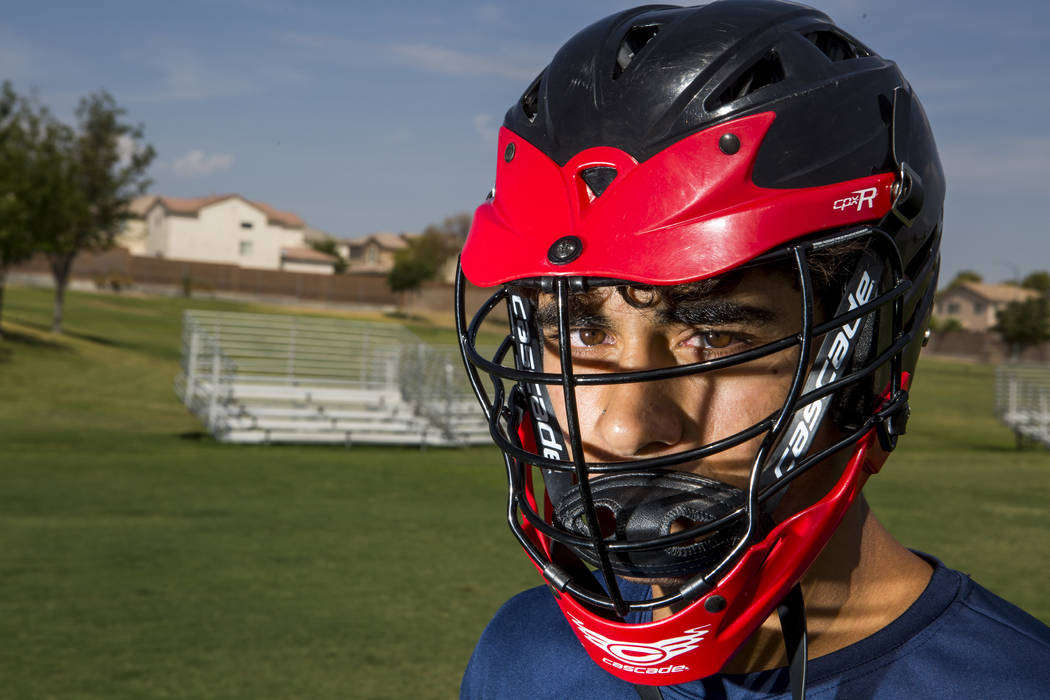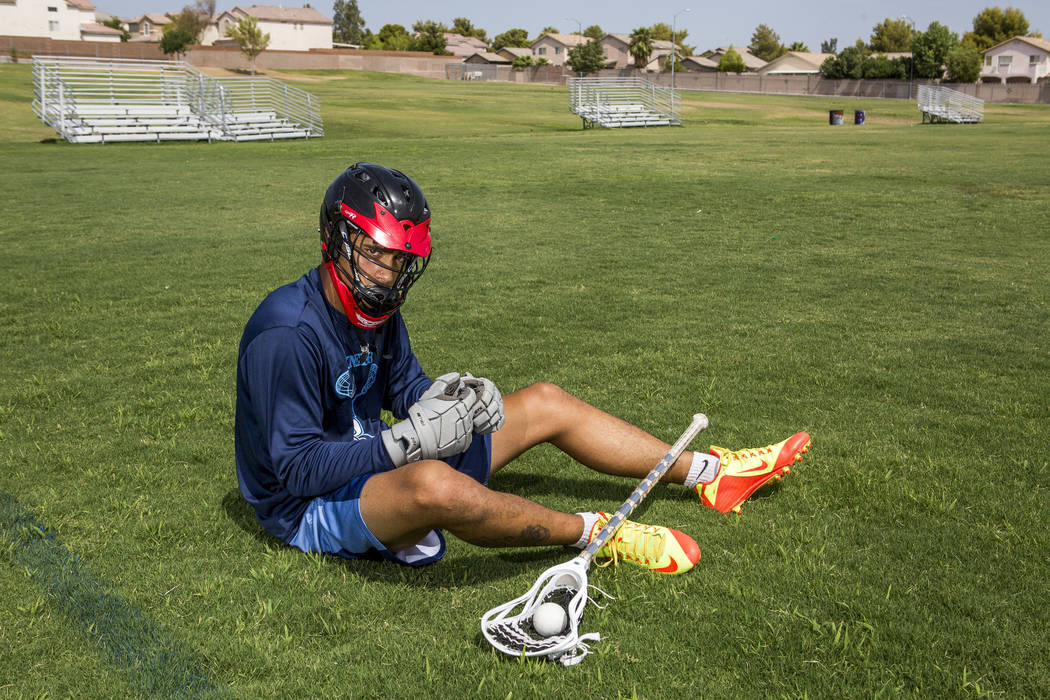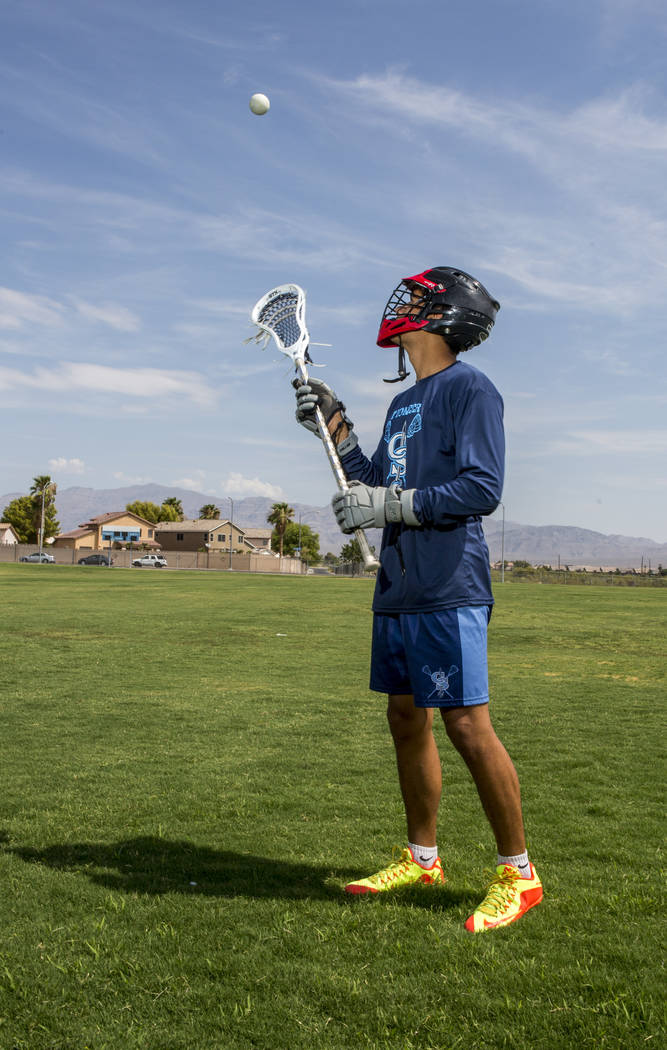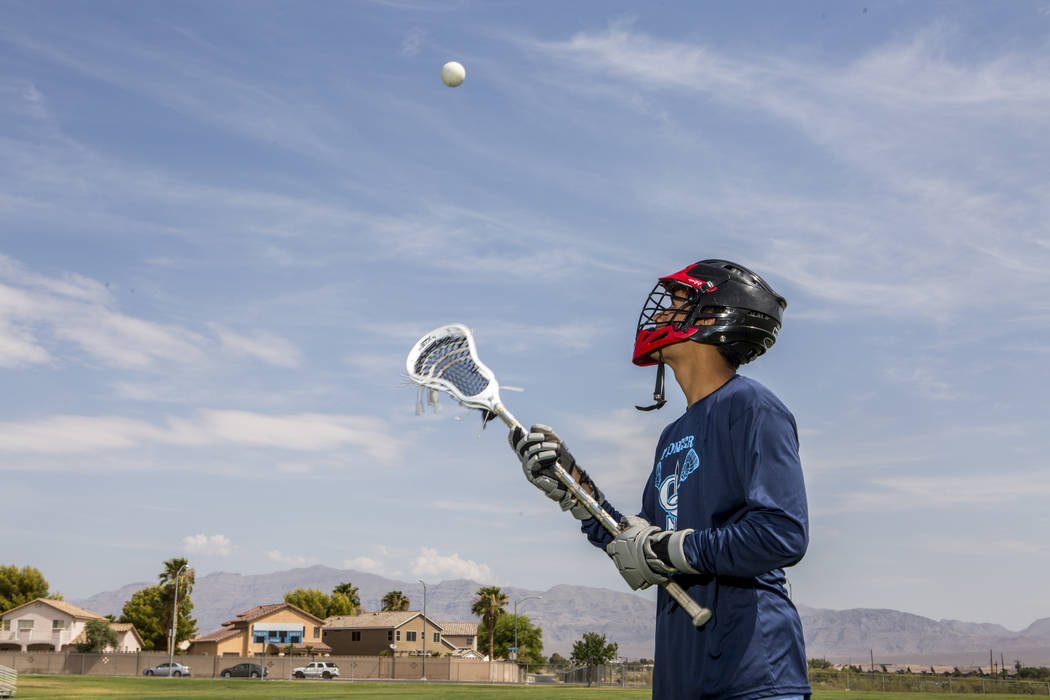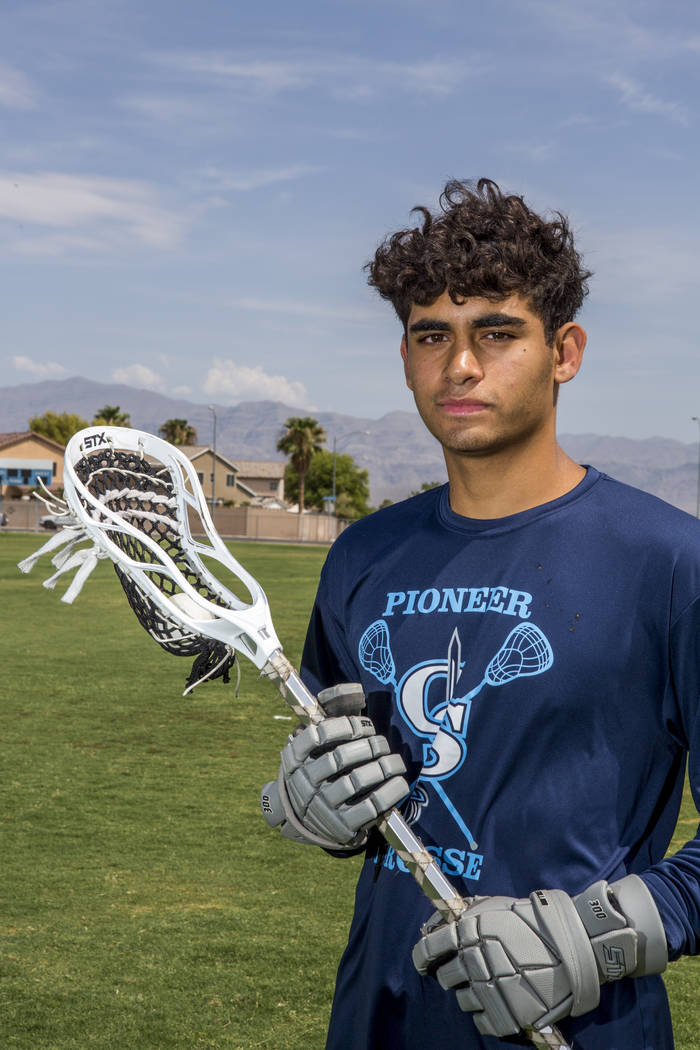Canyon Springs senior takes quickly to lacrosse, earns scholarship
Gregory Awa-Moppert, 17, of North Las Vegas didn’t pick up a lacrosse stick until January. After just four months, the Canyon Springs High School student was given a full-ride scholarship — a mix of a sports scholarship and federal student aid — to play the sport at Central Christian College of Kansas in McPherson, nearly 200 miles southwest of Kansas City. He plays midfielder, but will play attacker in college.
He’s the first student-athlete from Canyon Springs’ lacrosse program, which started this year, to receive a scholarship to play the sport, said program adviser Robert Nixon, also a math teacher. The school added lacrosse as a junior varsity sport after one of his students and a group of his friends approached him about it. There are 10 Las Vegas-area lacrosse teams in the JV men’s division, according to the Southern Nevada Lacrosse Association (SNLA). Canyon Springs will have a JV and a varsity team next year.
Nixon invited Awa-Moppert to informational meetings for the sport that attracted more than 100 of the school’s nearly 2,800 students, he said. Due to budget constraints, about 30 boys were added to the team. There’s also a girls club, which had 15 athletes last school year.
Like Awa-Moppert, none of the other students had played lacrosse before, program director and varsity boys head coach Bud Reschke said.
Reschke has been playing lacrosse since the sixth grade at Molasky and Leavitt Middle School (seventh and eighth grade). He said that he and his mother helped administration develop it’s lacrosse program at his high school Bishop Gorman (two years) because he had to play for a different school (Shadow Ridge) his freshman year and he played varsity at Palo Verde High School (because Bishop Gorman was only JV at the time and he needed to play varsity).
He played division II lacrosse at Lindenwood University for a year and a half and at Colorado Mesa University for nearly two years. He went onto coaching at Bishop Gorman and Northwest Career and Technical Academy (affiliated with school but didn’t have administrative help) before the program was cut (when Centennial High School brought back their team), and he was asked to come to Canyon Springs about one year later. He’s a volunteer with the Clark County School District, which abides with the Nevada Interscholastic Activities Association (NIAA).
“The kids definitely had no lacrosse IQ at first,” he said.
Awa-Moppert said the only thing he knew about lacrosse prior to joining the team came from a professional player, Paul Rabil, whom he had watched on a YouTube video.
Reschke spent about two months teaching the players fundamentals of the sport, such as how to handle and properly hold the stick. He cut a few players but kept those who were picking it up fastest, he said.
“At the beginning, I had no clue of what was going on,” Awa-Moppert said. “It was hard getting used to playing with a stick and throwing it. It was just different.”
Although Awa-Moppert hadn’t played before, he said his athletic skills from playing volleyball, soccer, football and basketball in high school helped him. Reschke said he’d use terms such as “fast break” (a swift attack from a defensive position), which can be applied to basketball, soccer and other ballgames, to help the players relate.
Awa-Moppert, who was named one of the team captains, said that he would practice on his own, throwing and catching the ball, and he’d also go to the field to practice with teammates on weekends. He said they quickly improved and began working better together. By the second game, he felt comfortable with playing, and by the end of the season, he was averaging about 5-6 points a game. The average is 3-6 points for the best players at the high school level (including goals or assists), Reschke said.
“Greg is very fast,” he said of Awa-Moppert. “He’s got great stamina. … (And) he’s the one who stepped up to the occassion and decided to be a leader of the team, not just because he’s a senior.”
His teammates noticed as well.
“He’s just a beast,” 16-year-old senior goalie Oscar Jaquez said. “He dodges (players) and makes them ‘break their ankles’ and he scores goals. He is just good with stick work and has the charisma of a leader.”
As Reschke focused on the field work, Nixon was working with the school to get funds for the new program. The program received two grants worth $5,000 total, which it used to purchase helmets (they cost about $259 each, on average). It also didn’t have jerseys for about five games. In the meantime, the players used football jerseys. After seeing the players have to switch out pads when they were not playing, a parent from an opposing team donated $800, which Nixon said he used to purchase eight shoulder pads. The program also purchased sticks and pads with money from fundraisers and community support.
Players had to pay about $200 each for their physicals, membership and other fees, Nixon said. The program aims to change that and provide opportunities for students in the inner-city area, he added.
“Lacrosse is not (historically) an inner-city sport,” he said. “Lacrosse is expensive. It’s a suburban sport.”
Awa-Moppert, who is of Hawaiian descent and was raised by a single mother of five boys (including him), said that when he started playing lacrosse, people often said “only white kids play.”
“Not anymore,” Reschke added. The school’s team has predominantly Hispanic and black players with a few other minority players (Asian and Hawaiian), which reflects the demographics of the student population, Nixon said. The students are about 60 percent Hispanic.
With a couple of months to learn the sport, the team struggled in its first few games.
It won one game of 11 during the season, against Coral Academy. Throughout the season, Reschke said, the team changed his perspective about winning and losing.
“They still suceeded, in their minds, because of all they did,” he said. “They may have lost on the scoreboard, but they probably won more (games) than the actual teams that won because of their experience.”
Reschke said he contacted college coaches about recruiting Awa-Moppert and although several schools were interested, they felt Central Christian would be best. Awa-Moppert plans to study business and said he’s relieved his mother won’t have to worry about sending him to college.
Reschke said that the lacrosse program will be assisting Awa-Moppert with getting supplies and other necessities to make sure that he is prepared for school.
Reschke said the team has about seven students who have the potential to receive college scholarships this upcoming year.
Jaquez said Awa-Moppert’s accomplishment has given him a goal to aspire to.
“It gives me some hope that I can possibly go to college myself,” he said. “I wasn’t really planning on it because my grades aren’t the best, but I plan on getting them up. … He earned it, (and) hopefully I can earn it, too.”
The program has received interest from students at other high schools who don’t have a lacrosse program, Nixon said.
Awa-Moppert said lacrosse has transformed his life.
“I’ve made better friends with lacrosse players throughout high school than with anybody else,” he said. “This was the best thing I’ve ever done at Canyon (Springs).”
Contact Kailyn Brown at kbrown@viewnews.com or 702-387-5233. Follow @kailynhype on Twitter.
How it began
Canyon Springs High School added lacrosse to its sports roster during the 2016-17 school year. It is the only high school in North Las Vegas that offers lacrosse. It started with only a junior varsity team, which is required for a first-year sport through the Clark County School District, but it will have both JV and varsity next year.
What is lacrosse?
Lacrosse began as an American Indian sport that was played as early as the 12th century, according to the Southern Nevada Lacrosse Association. It is a contact team sport played between two teams using a small rubber ball and a long-handled stick called a crosse, or lacrosse stick. The sport has four major types: men's field lacrosse, women's lacrosse, box lacrosse and intercrosse. Participants play one of four positions: midfield, attack, defense and goalie. Generally, there are 10 players on a team during a game.



